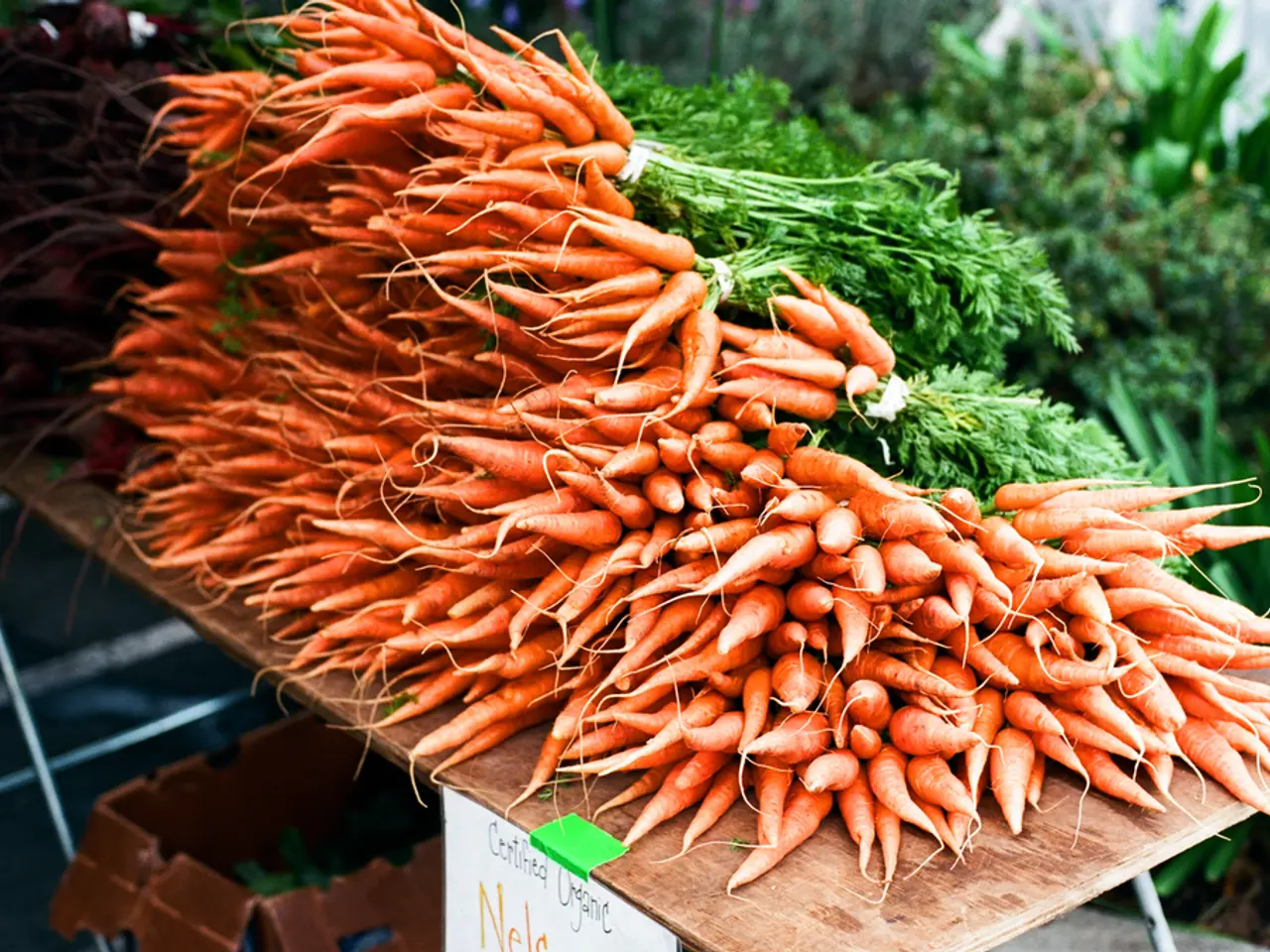guides for cultivating carrots
Growing Vibrant Carrots: A Guide for Home Gardeners
Carrots are a beloved vegetable in many kitchens, and with the right care and conditions, you can grow your own at home. This guide will walk you through the process of growing diverse carrot colors like purple, yellow, and white, as well as provide tips on caring for and storing your harvest.
Choosing the Right Seeds
To grow various carrot varieties, start by selecting seeds suited to your climate and soil. Look for open-pollinated (not F1) seeds, such as the Rainbow Blend mix containing Lunar White, Solar Yellow, and Cosmic Purple varieties. Carrots prefer full sun, deep, loose, well-drained soil, and should be sown directly outdoors, as they don't transplant well.
Planting and Growing
Sow seeds about ¼ inch deep, spacing them about 1 inch apart, with rows about 12-18 inches apart. Germination takes 14-21 days, and carrots mature in approximately 65-75 days, depending on the variety. For heavy or clay soil, choose shorter varieties like Chantenay carrots. Carrots do not grow well in hot soil (above 75°F), so plant in early spring or fall for best results. Thin seedlings carefully by cutting (not pulling) young plants to avoid disturbing neighboring roots.
Caring for Your Carrots
Keep soil consistently moist but not waterlogged to aid germination and good root development. Mulch can help maintain moisture and temperature. Avoid high nitrogen fertilizer, which encourages leafy tops over root growth. Carrots prefer cooler weather, so plan for spring and fall crops if your climate allows. Aim to keep the soil around them weed-free.
Harvesting and Storing
Carrots are ready when roots reach the expected size (varies by type, usually 2-6 inches long). Gently pull carrots by their tops to avoid breaking roots. Early harvesting of baby carrots can happen sooner, but full development for best flavor takes longer. After harvest, remove foliage about an inch above the root. Store carrots in a cool, humid place—ideally in the refrigerator or a root cellar in perforated bags or moist sand. Properly stored carrots can last several weeks to months without losing quality.
Preventing Common Problems
Carrot fly is a common problem for growing carrots, with maggots eating tunnels through the roots. To deter carrot fly, consider using a 45cm-high fine-mesh barrier, fleece, or similar material around your carrot patch. Alternating a row of carrots with a row of companion plants like onions or garlic may also help, as these plants can mask the smell of carrots that attracts carrot flies.
Resistant carrot varieties like 'Resistafly', 'Flyaway', or 'Syrtan' can also help deter carrot fly. If you notice carrot fly larvae in your soil, consider using horticultural fleece to cover your carrot patch.
In summary, growing diverse carrot colors like purple, yellow, and white involves choosing appropriate seeds, ensuring loose soil, planting in the right season, providing consistent moisture, careful thinning, and harvesting when mature. Proper storage then extends their freshness for home use. Happy gardening!
Maintaining a suitable lifestyle for home-and-garden enthusiasts includes considering soil preparation for various carrot varieties to enhance garden vibrancy. By selecting open-pollinated seeds and ensuring deep, loose soil, home-gardeners can cultivate diverse carrot colors such as purple, yellow, and white through carrot planting and growing.




